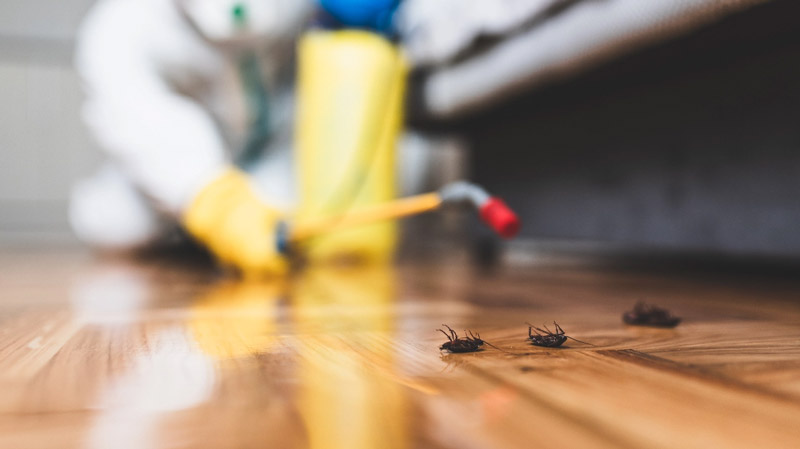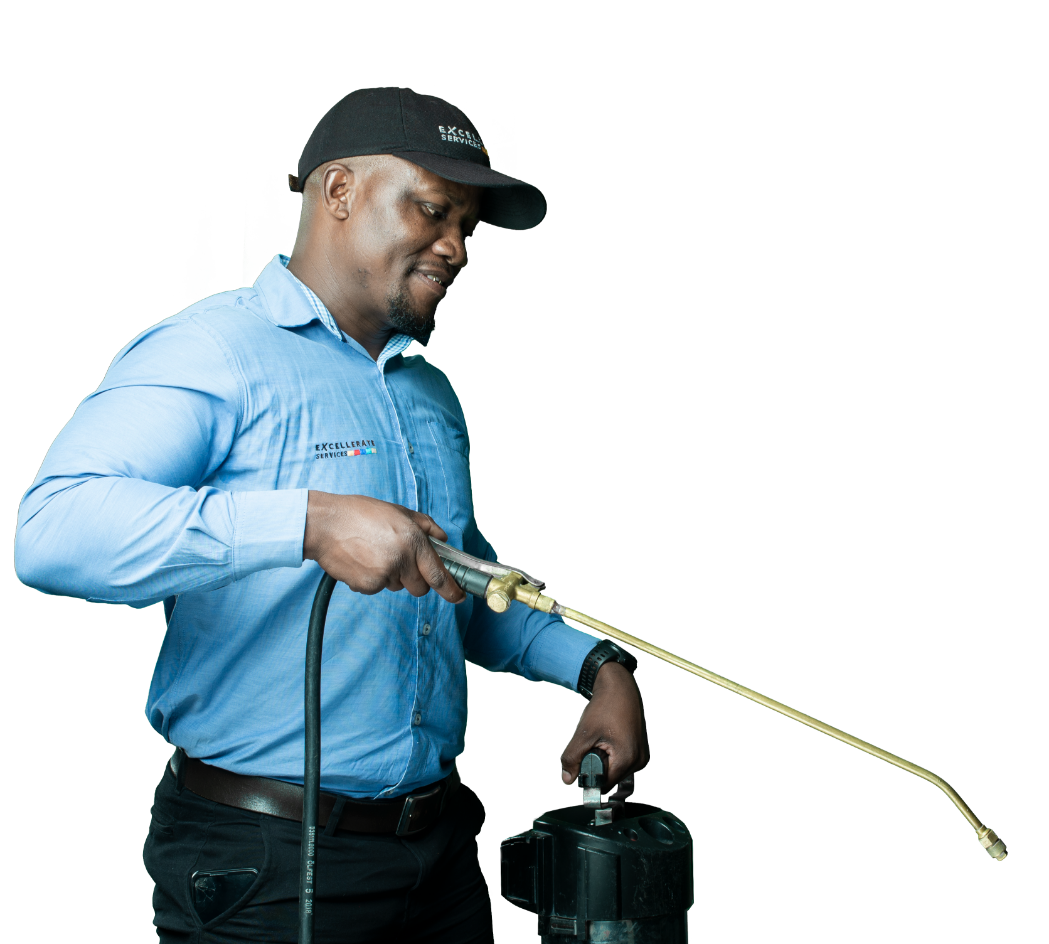Certified Pest Control for a healthier living space.
Eco-Friendly Parasite Control Approaches for Handling Wildlife in Urban Areas
Urban locations frequently locate themselves at the crossway of human activity and wild animals, resulting in one-of-a-kind challenges in insect management. Green methods highlight sustainable conjunction, utilizing techniques such as habitat modification and all-natural repellents to mitigate human-wildlife problems. These methods not only secure the environment yet likewise enhance community engagement in wildlife monitoring. As metropolitan populaces remain to grow, comprehending the dynamics of wild animals interactions comes to be significantly critical. What ingenious methods can be executed to guarantee both eco-friendly equilibrium and metropolitan safety and security? Discovering this inquiry reveals an engaging landscape of prospective options.
Recognizing Urban Wild Animals Dynamics
Recognizing Urban Wild animals Characteristics is important for creating efficient and eco-friendly pest control strategies. Urban locations are increasingly ending up being environments for different wild animals species, driven by variables such as environment fragmentation, food availability, and human infringement. Identifying these dynamics permits a nuanced method to pest monitoring that lines up with environmental concepts.
Urban wildlife usually consists of varieties such as raccoons, squirrels, and birds, which adapt to city settings, locating particular niches in green rooms, parks, and even domestic locations. Their existence can lead to conflicts with humans, especially when they exploit human resources for food and shelter. Recognizing the habits and eco-friendly duties of these varieties notifies techniques that decrease negative communications while promoting biodiversity.
Furthermore, recognizing the interdependencies within metropolitan communities helps in determining critical areas for habitat conservation and restoration. This understanding adds to the development of integrated parasite monitoring (IPM) techniques that think about the eco-friendly equilibrium, thus decreasing reliance on damaging chemicals. By cultivating coexistence in between humans and city wild animals, cities can produce healthier environments that benefit both locals and regional communities, leading the method for lasting metropolitan living.
All-natural Repellents and Deterrents
Natural repellents and deterrents supply a lasting option to conventional parasite control techniques by harnessing the power of nature to maintain undesirable species away. These environment-friendly remedies generally make use of plant-based components, vital oils, and various other naturally occurring materials that hinder parasites without damaging the environment.
One effective all-natural repellent is peppermint oil, which is recognized to repel rodents and pests. Its strong fragrance is undesirable to several bugs, making it a preferred selection for city settings. Vinegar and citrus peels can offer as deterrents, as their strong odors are typically uninviting to different wildlife.
Furthermore, diatomaceous planet is an all-natural powder that can be spread out in areas prone to insect task, properly drying out and preventing bugs without presenting threats to non-target types. Furthermore, garlic sprays and neem oil are identified for their capacity to repel a large range of parasites, consisting of both pests and bigger wild animals.
Executing these all-natural repellents not just minimizes dependence on chemical pesticides however also advertises a much healthier city community, cultivating a much more balanced coexistence in between humans and wild animals. By using these methods, metropolitan areas can effectively handle pest populaces while minimizing ecological influence.
Habitat Modification Strategies
Reliable habitat modification strategies play a vital duty in sustainable bug administration by modifying the environment to make it much less for pest infestations. By comprehending the ecological characteristics of urban areas, Wildlife removal Port Charlotte homeowner can implement calculated alterations that deter insects while promoting biodiversity.
(Integrated pest management Port Charlotte)One main technique entails keeping appropriate cleanliness. This includes normal waste elimination, securing garbage can, and getting rid of standing water to minimize reproducing websites for insects and rats. In addition, landscape design practices such as selecting native plants can improve eco-friendly equilibrium, supplying habitats for helpful organisms while lessening resources for parasites.
One more crucial approach is to seal entrance factors in buildings. Inspecting and fixing fractures in structures, wall surfaces, and home windows can considerably decrease insect access. Creating physical barriers, such as fences or plant buffers, can prevent wild animals movement right into human-inhabited areas.
Integrated Parasite Monitoring Practices
Structure upon environment alteration methods, integrated bug monitoring (IPM) practices use an all natural strategy to managing bug populaces while reducing ecological influence. IPM integrates numerous methods, consisting of biological, social, mechanical, and chemical controls, to accomplish effective pest monitoring.
Biological control entails the intro of all-natural predators or parasites to lower pest populaces. Cultural methods, such as crop rotation and sanitation, disrupt pest life process and lessen their habitats - Pest Control. Mechanical controls, like catches and obstacles, offer prompt remedy for pest stress without chemical treatment
Chemical controls are utilized as a last resource, concentrating on targeted applications that restrict harm to non-target species and the environment. The choice of environmentally pleasant chemicals, when needed, is integral to the IPM structure. Furthermore, checking insect populations and evaluating possible damage helps notify decision-making, making certain that treatments are timely and reliable.
Neighborhood Involvement and Education

(Termite Control)Workshops and informative sessions can outfit residents with understanding concerning native species, habitat conservation, and effective non-toxic parasite monitoring methods. Partnership with schools, regional companies, and government agencies additionally improves academic outreach, making sure that necessary information gets to diverse target markets.
Furthermore, community-led initiatives, such as community clean-up days and habitat reconstruction projects, not only promote biodiversity however likewise strengthen community connections. Pest Control. By encouraging residents to share their experiences and monitorings, communities can establish targeted strategies that address specific neighborhood parasite issues
Integrating feedback from locals into bug monitoring prepares makes it possible for a much more responsive and adaptive approach to wildlife challenges. Inevitably, informed and engaged areas are vital to accomplishing lasting success in environment-friendly bug control, causing healthier city environments that appreciate both human and environmental demands.

Conclusion
To conclude, environmentally friendly parasite control comes close to deal sustainable services for managing urban wild animals. By prioritizing habitat adjustment, making use of all-natural repellents, and carrying out integrated pest monitoring methods, neighborhoods can foster an unified coexistence with neighborhood fauna. Engaging citizens with education and learning enhances awareness and urges liable wild animals communications. Eventually, these approaches not just secure biodiversity yet also advertise environmental wellness, guaranteeing metropolitan areas stay lively communities where humans and wildlife thrive with each other.